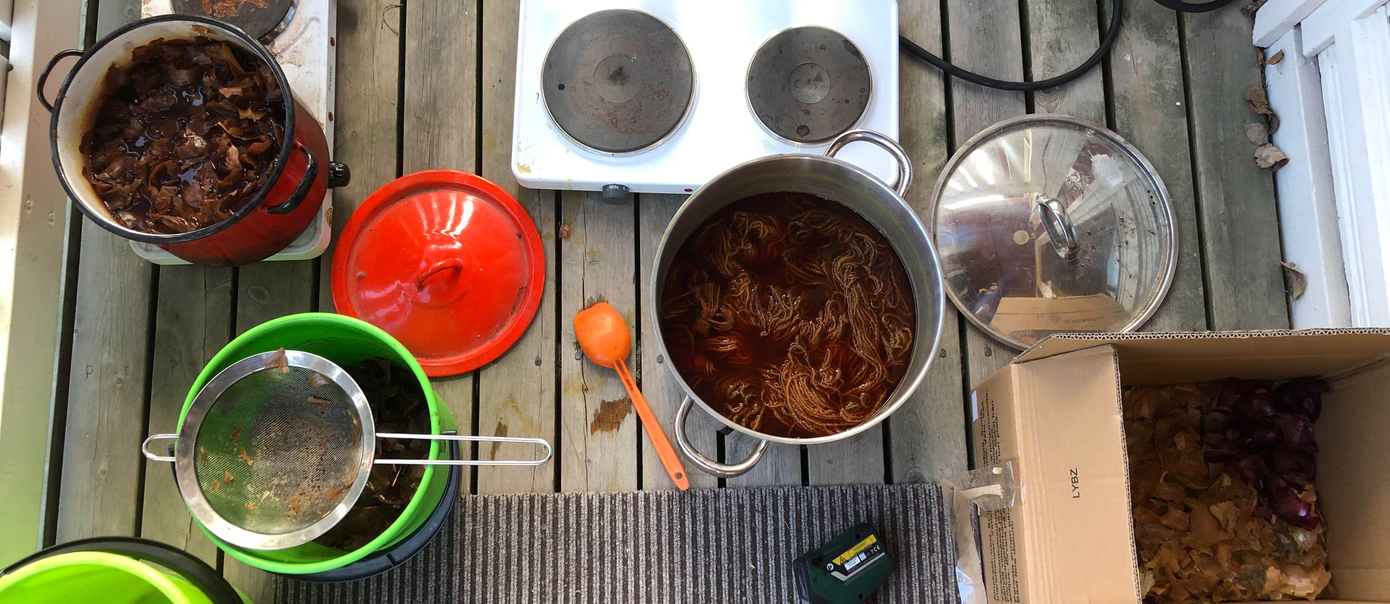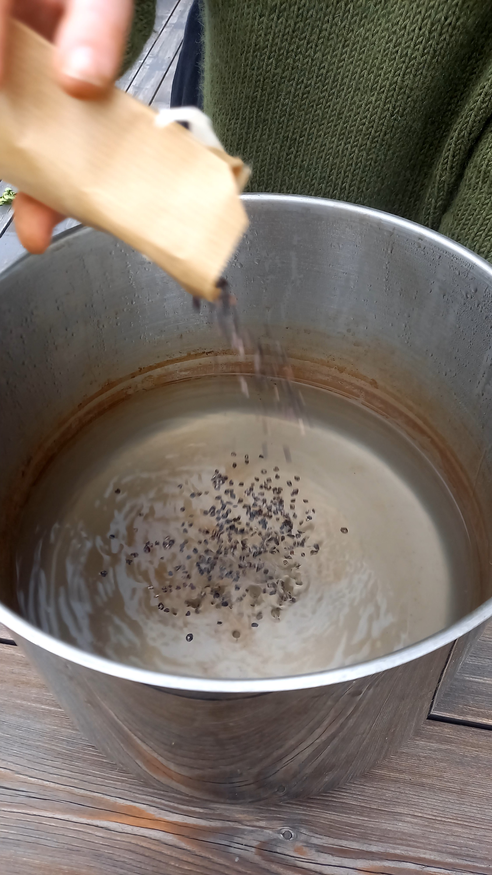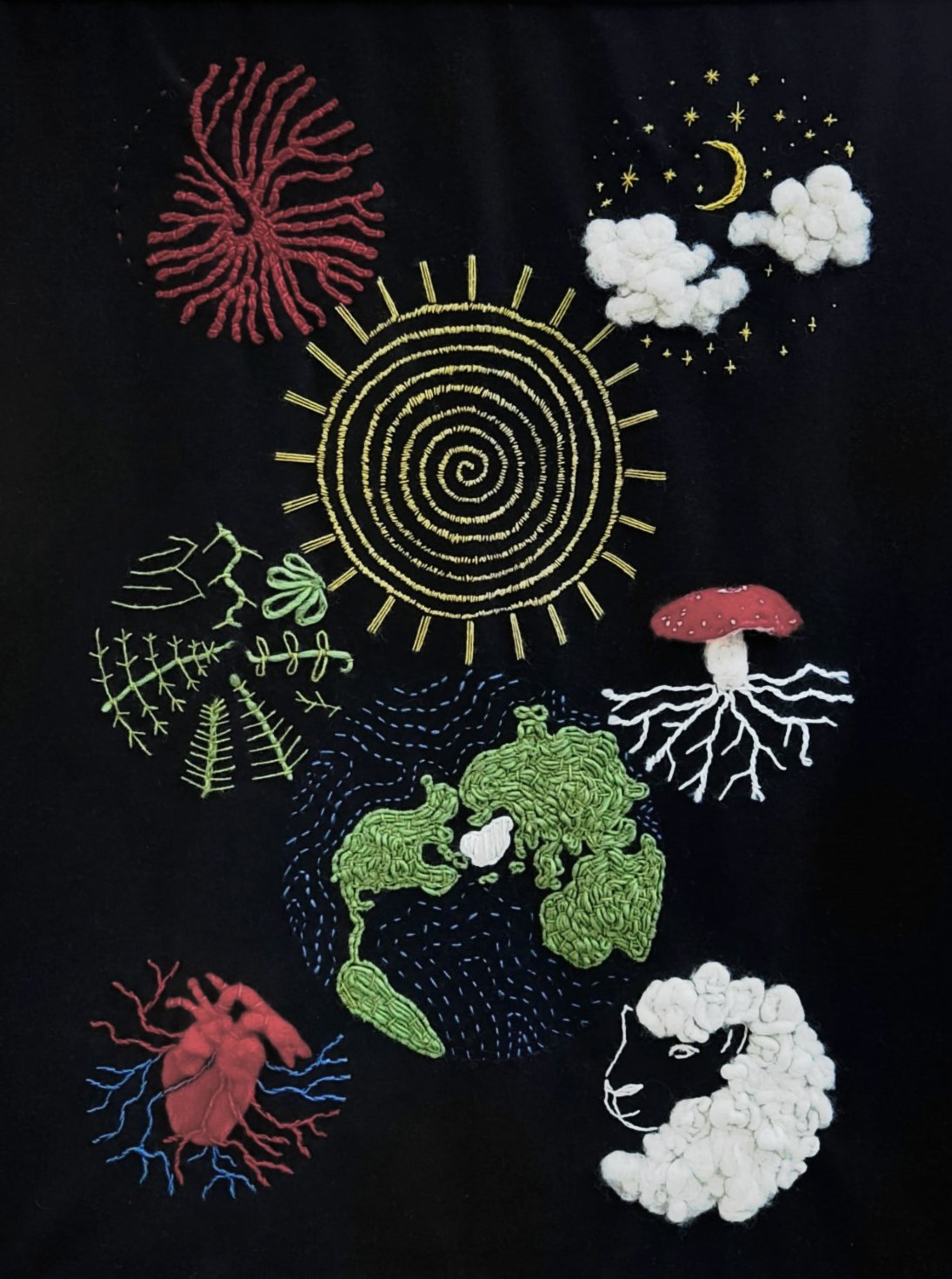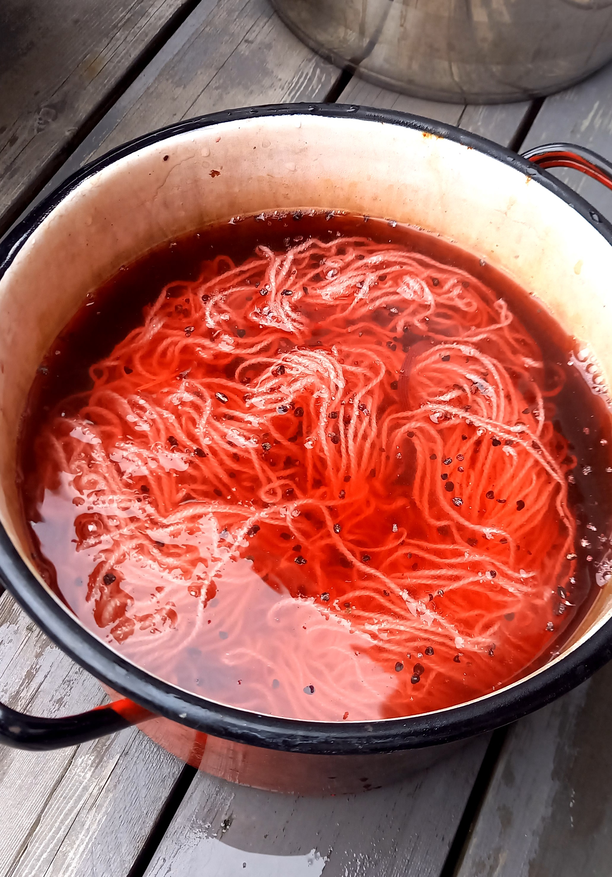Fig. 16. Cervantes embroidered piece, Threads of Unity: Gaia´s Cosmos, photograph by Maria Huhmarniemi, 2023
Figures. 13-15. Pictures of the dyeing process, color palette of the cochineal. Photographed by Cervantes 2023.
Figures 10-11. Pictures of dried cochineal and dyed yarn and dyeing process, Pictures Lola Cervantes, 2023
The consideration of the cultural sustainability of dyeing with cochineal includes reading its history. Most information is written from a pro-Hispanic and Euro-centrist perspective, with a writing style that enhances the colonialist vision of conquering continents and their cultures. In many sources, the language used implies that some people still believe they “conquered” America by calling Mexico “Nueva España” (New Spain). Some sources indicate how Spain is to be praised for the discovery of this knowledge that was millennia-old, as evidence suggests that cochineal dyeing dates from the 2nd century before the Common Era. “Any discussion about discovery inevitably limits parameters to one perspective which is incomplete, is in favour of those who dominate, and is from above” (Dussel, 1988, p. 128).
I figured out that the best way to understand the issue was to read several sources from a non-Hispanic, eurocentric perspective, and carry out my own experiment, artistic approach and interpretation, in the first person. There is a strong need to re-own this part of history and look at it from a decolonial perspective. It is time that we, as researchers, contribute to a new multidirectional memory and to the decolonization of global history. It´s time that global history includes these narratives. I strongly believe that revitalisation practices can allow for this possibility. -Cervantes research diary
The properties of the cochineal were investigated by implementing experimental research methods. During the process, experiences in which the dyeing has not worked out as desired have been mentioned. Some of the team members were doubtful about the results; nevertheless, it was important for us to test this technique even if we were not able to achieve the results that aimed for.
The process was carried out during two different sessions (figures 10-15). In the first one, we mordanted the yarn for 10 days. The brightest shade of red was achieved when we incorporated vinegar as an acid to alter the pH of the solution. We perceived changes and tonalities after the water wash, and the second wash of the yarn came lighter, with a dark pink tonality. In the second session, we were able to witness and evaluate the difference in colours between washes. Dyeing with such an ancestral technique was a fascinating process that taught us a lot and opened doors to other questions and perspectives. The group’s reactions were of excitement and surprise.
Discussions about other methods for achieving red tonalities emerged during the process, such as dyeing with Madder, Pau do Brasil, Palo de Campeche of Mexican origin as well and also known as Logwood, Anatto native to Central America, and also known as Achiote, and the Kermes insect, which gives the colour named crimson). Comparisons and evaluations of other dyeing methods, pigments and materials were discussed. The outcome was a complete skein of 100 grams of bright red yarn, which later became a few balls that we distributed among the group for the development of personal embroidery pieces. See Figures 16 and 18: Cervantes’s pieces for the Embroidered Stances project.
During the sessions, the group also collects mostly locally sourced natural pigments, such as plants and mushrooms, for the wool-dying process. Also, some sources of colour were obtained from contemporary material circulations, such as liquid from soaking black beans and avocado peels and bones.Since the project takes place in a contemporary context in which materials circulate the globe, the collective did not limit itself to the exclusive use of local and regional plants and mushrooms. Ecological sustainability of the source of pigments was considered: no rare plants and mushrooms were harvested and edible ingredients were not wasted in the project.
In the past, numerous Indigenous cultures have cultivated techniques and processes that involve living elements from nature in a respectful manner, considering their life cycles and adapting to specific contexts. As stated by Sueur (2019, p. 7), "For thousands of years, humans have developed a strong collaboration, as opposed to a use, with dogs, donkeys, horses, cats, and so on. These animals, not only humans, have benefited from this cooperation." In the context of Indigenous cultures, the integration of living elements from nature into various processes demonstrates a profound understanding of ecological interdependence and symbiotic relationships. By exploring the rich history of these practices, we can gain valuable insights into traditional ways of engaging with the natural world and fostering more harmonious coexistence with all living beings. (See Fig. 11 Cervantes embroidery, 2023)
On the other hand, it is essential to consider also Indigenous collaborations with animals in light of our current understanding of animal sentience, their ability to experience pain, and consciousness.The recognition of the cochineal as an agent in these interactive relationships further contributes to the acknowledgement of non-human agencies and their role in shaping cultural practices and expressions throughout history.
Through our analysis of the history and method of cochineal dyeing, we gained a fresh perspective on this practice and came to perceive the cochineal as an entity that, over centuries, has facilitated interactive relationships between humans and other-than-human agencies.
Cervantes´s embroidery (figure 16) reflects on the concept of an old vision of the world juxtaposed against a new integrative worldview where we see ourselves connected to nature and to each other, animals, plants and other than human agencies; recognising the Earth as the ultimate source of value, meaning and enablement for all beings, including – but not only – human beings.
Complex issues of identity, biodiversity and cultural colonialism are interwoven into discussions about cochineal. Issues related to the conflictive relationships that humans have developed with certain species through domestication, co-existence and in some cases exploitation, for example, cochineal, have been discussed. Talking about cochineal is talking about Indigenous knowledge, the kind of knowledge that is connected to lands, ecosystems and communities. While reflecting on these issues, we agreed on how this example would be valuable in contemporary society. We discussed how natural dyes and processes originated from Indigenous cultures and have become of special interest in the craft and artistic fields, and how the need for more sustainable materials has become a necessity (Seisl & Hengstmann, 2021).
At first, I adopted a passive role as an observant, since in addition to crafters, researchers and visual artists, our group includes experts in the field of dyeing processes. With time, I have taken an active role and have been able to assist in the entire processes, propose alternatives to situations that emerge, and provide information available in my native language about the use of cochineal. (Cervantes, research diary)
With the previous ideas and thoughts about cochineal in mind, I wanted to experiment with cochineal dyeing, and I figured out that I needed to be as respectful as possible. Given the fact that behind this insect stand thousands of years of pre-Hispanic history, and 500 years of colonialist issues, trade and cultural appropriation, I felt the need to resignify and dignify this practice by creating a respectful piece and understanding the complete history of this cultural practice, with its many sides and from a polycentric approach. Moreover, I was hoping to carry out a respectful experiment and bring the subject to discussion with our international group, hoping to open the dialogue on these issues. The following experience emerged from a session on the project Embroidered Stances. (Cervantes, research diary)
The Embroidered Stances project sessions include selecting methods of wool dyeing and researching the history of the materials, dyeing processes and sources of colour that go from madder to mushrooms, roots, leaves and insects, such as cochineal. Within the wool-dyeing activities, Cervantes proposed the idea of using the cochineal to reflect on her own culture. She read about the technical aspects of the process, and watched tutorial videos from Mexican experts to learn the process, read instructions on how long to boil the mixtures, mordant the skeins, calculate the number of pigments, and other details. Cervantes familiarised herself with experiences from other crafters who had previously dyed wool with cochineal. There were several sources with significant differences in the process and the amount of information felt confusing: “For how long should we mordant the yarn? Should we store it dry after applying the mordant? How many insects do we need to dye two skeins of wool?” The process highlights the nature of traditional practical knowledge and the crafting process. The method is slow, and allowed the members to develop their knowledge and agency to collaborate with natural materials, as Cervantes reflected:






